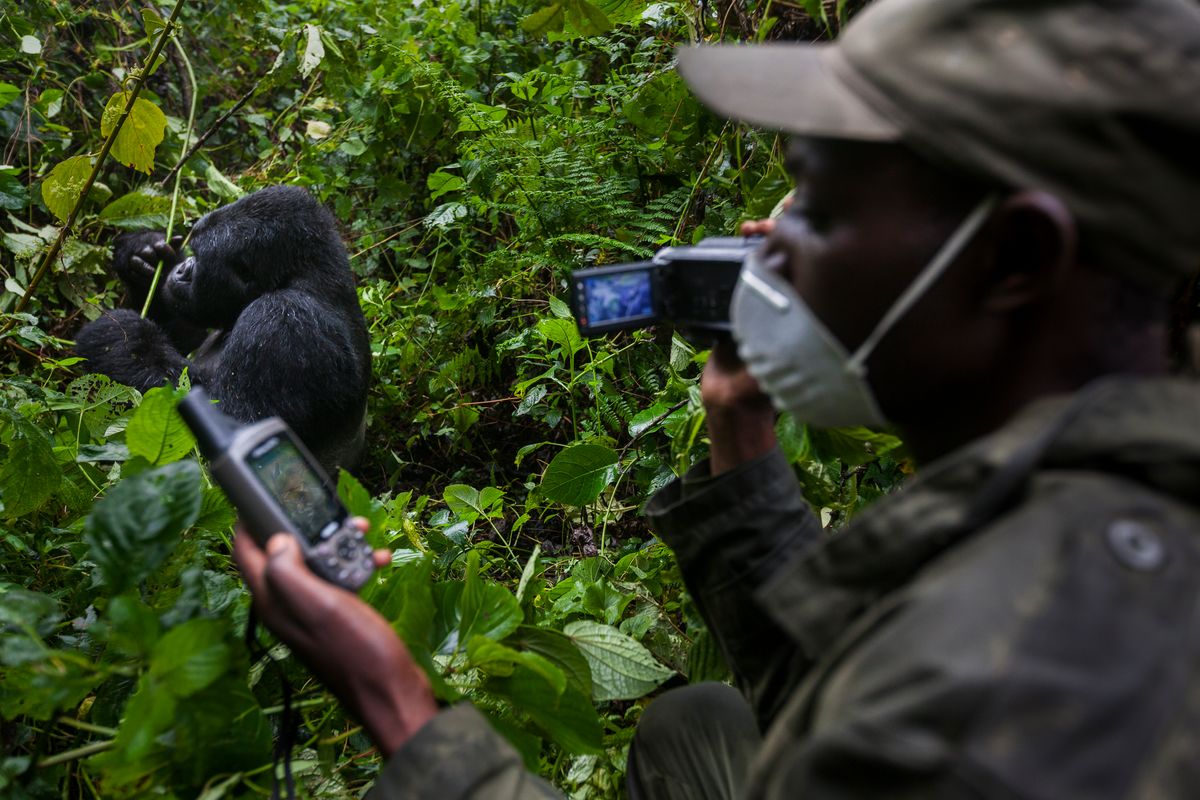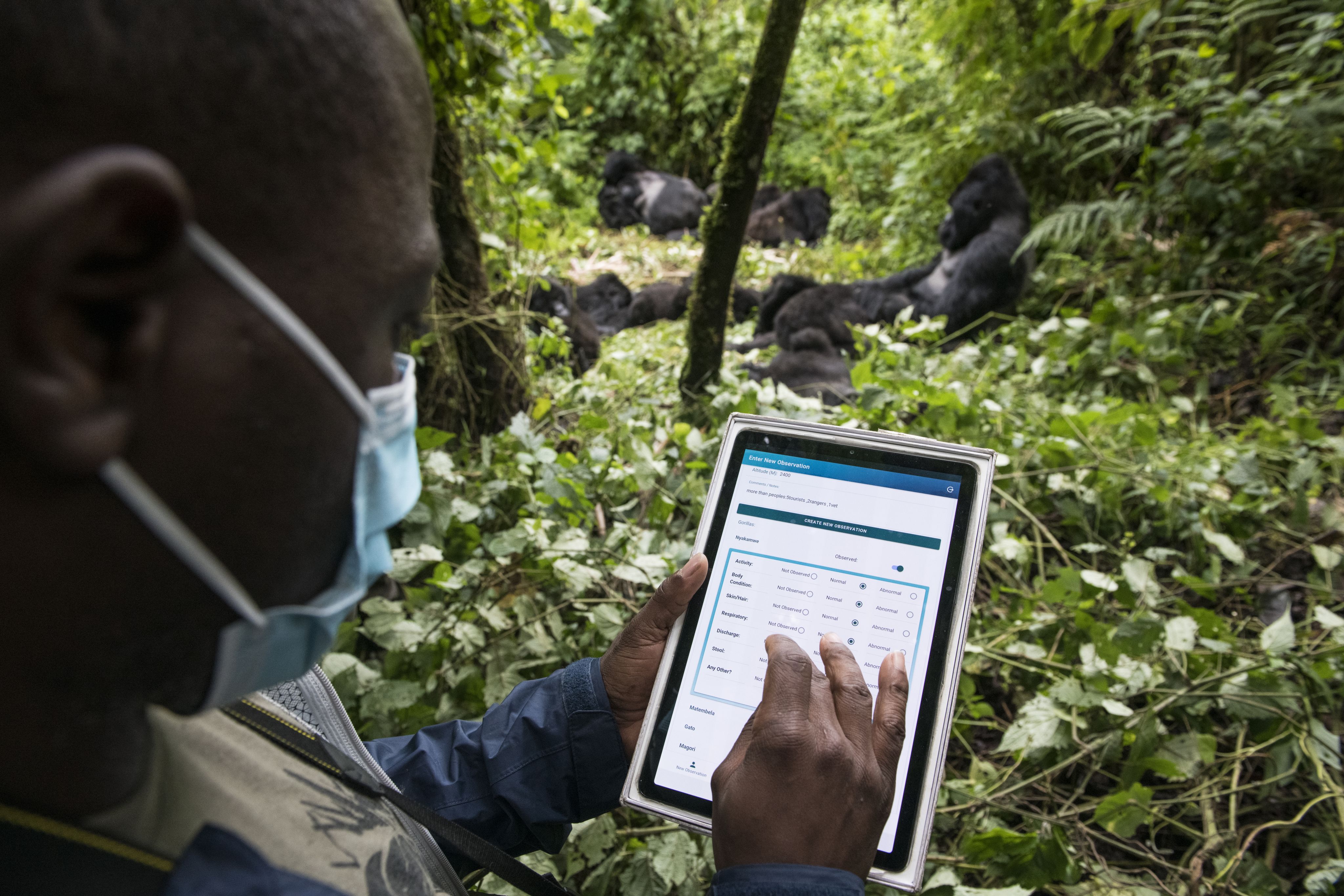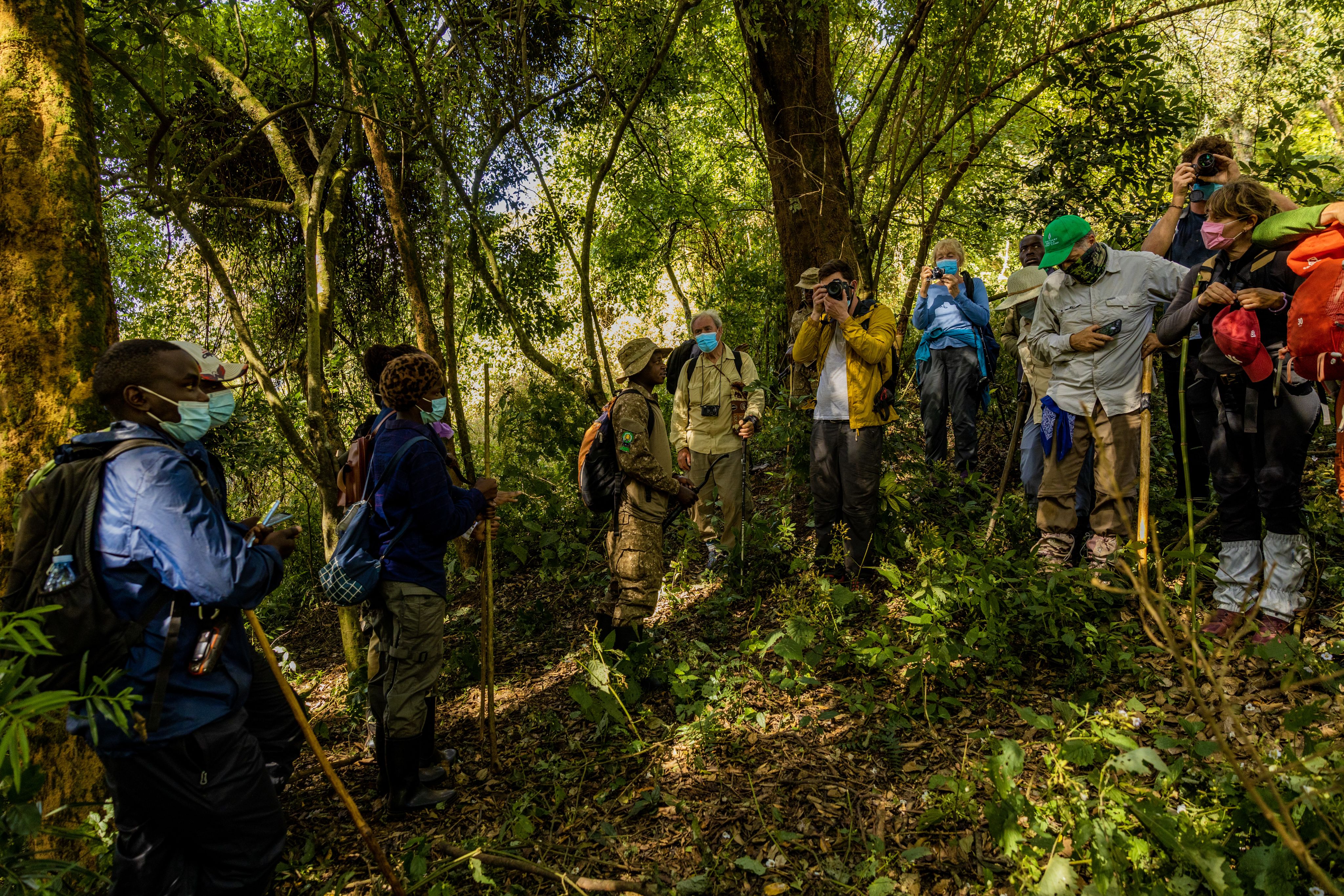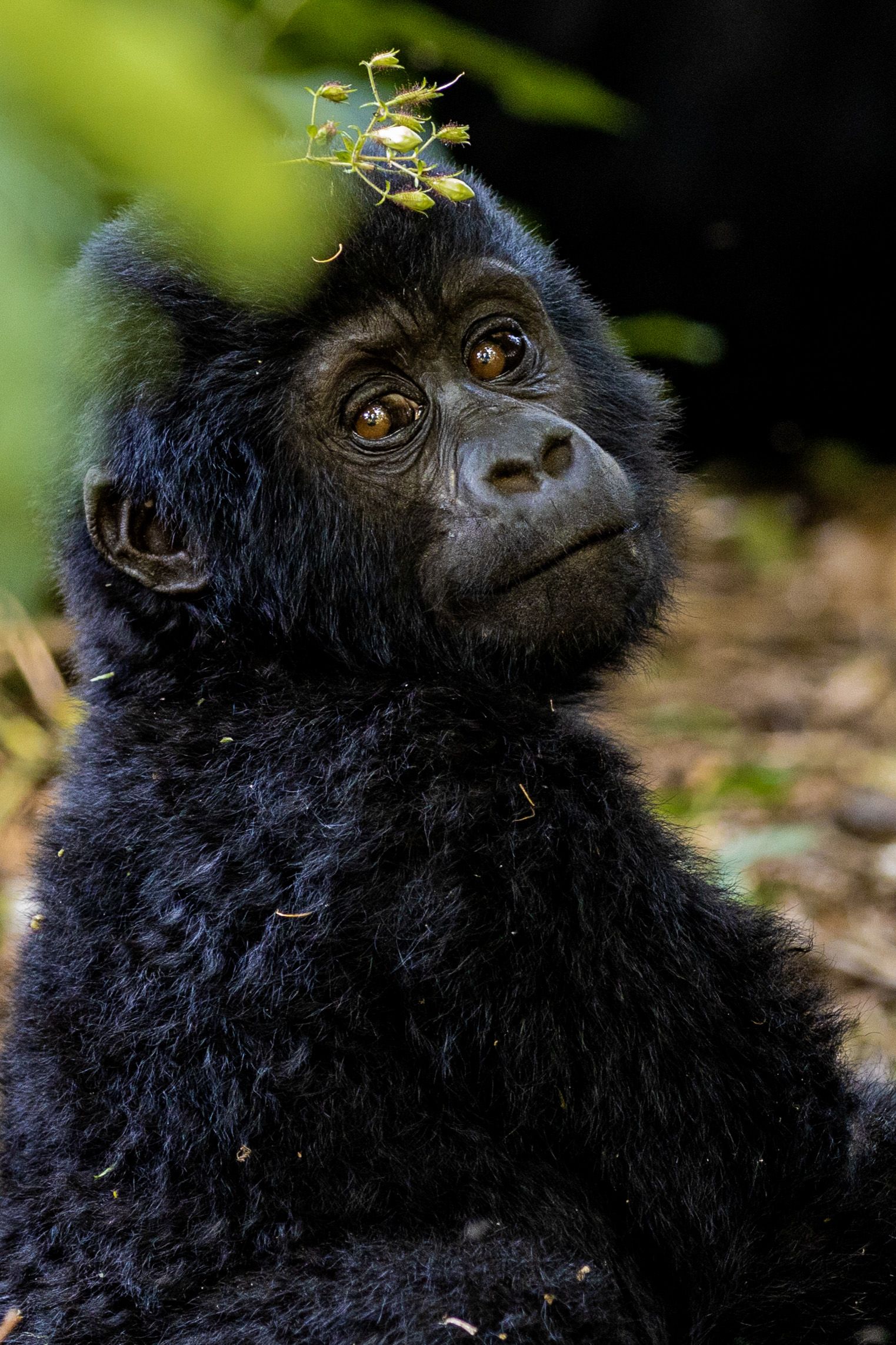IGCP 30 Year Impact Report
Chapter 3
The Impact of Science and Innovation

Science and innovation are crucial for gorilla conservation because they increase the understanding of the threats. They also support targeted conservation interventions and technologies. By combining scientific knowledge with innovative approaches, IGCP has developed effective strategies to protect mountain gorillas and their habitat for future generations.
Using Science for Impact
IGCP has used knowledge and information generated from research, monitoring and socio-ecological assessments to influence policy and reforms that support mountain gorilla conservation.
It has used credible scientific information to advocate and lobby for better decisions on infrastructure development (such as public roads in Bwindi National Park) and tourism development infrastructure (such as cable cars and hospitality facilities in and around Volcanoes National Park).
IGCP has led on technical reports and scientific articles that have been widely referenced in publications, policies and operating guidelines from governments and protected area agencies. The coalition has also developed several policy briefs including on mountain gorilla tourism, human-wildlife conflict, transboundary collaboration, and disease transmission – and has lobbied protected area agencies, local governments and the private sector for their uptake.
Perhaps the most crucial scientific intervention supported by IGCP has been to better understand how many mountain gorillas there are left in the world and where they are.

Counting Mountain Gorillas
IGCP has supported – and continues to support – mountain gorilla monitoring by providing essential field equipment and monitoring software, as well as training rangers in census and monitoring techniques and in monitoring mountain gorilla behaviour and demographics.

This cumulative effort has provided up-to-date information on mountain gorilla population numbers and dynamics that has guided conservation and tourism strategies and actions on the ground.
Data on the population of mountain gorillas informed the IUCN’s decision in 2018 to downlist mountain gorillas from critically endangered to endangered.
A tool to monitor mountain gorilla numbers
IGCP collaborated with Gorilla Doctors, Institute of Tropical Forest Conservation, The Dian Fossey Gorilla Fund and Max Planck Institute for Evolutionary Anthropology to develop a tool for conducting mountain gorilla censuses. The tool was completed and adopted by protected area agencies in 1997 and has been continuously updated to integrate new measurements and innovations such as DNA analysis.
Between 1996 and 2000 three mountain gorilla censuses were successfully conducted using this tool, which has proved effective and reliable. Its results have been endorsed by the three partner states.
"We greatly appreciate the support from IGCP that helped us to develop a standard mountain gorillas census tool... We now know how many gorillas we have and their movement within the parks. We have this data that supports our conservation and protection strategies."
A Collaborative Effort
IGCP in collaboration with UWA, ICCN, RDB and other partners carried out the first mountain gorilla census in Virunga Massif in 2003, in Bwindi Impenetrable National Park in 2006, and across the entire mountain gorilla population in the Virunga landscape in 2016. The partners included Bwindi Mgahinga Conservation Trust, Conservation Through Public Health, Gorilla Doctors, Institute of Tropical Forest Conservation, Mammalian Ecology and Conservation Unit of the UC Davis Veterinary Genetics Laboratory, Max Planck Institute for Evolutionary Anthropology, Wildlife Conservation Society and WWF.


©️IGCP
©️IGCP

Monitoring the movements, ecological changes and social impacts of mountain gorillas
IGCP has helped to collect and analyse data on mountain gorillas and other large mammals since 1997. The coalition helped to establish a ranger-based monitoring system (SMART) that harmonized information collection and sharing among the protected areas agencies. The system, which included installing cameras in Mgahinga and Volcanoes national parks, monitors the movement of mountain gorillas and other large mammals within parks and across borders. IGCP also helped to establish protocols for data and information sharing and reporting.
The ranger-based monitoring system continues to provide up-to-date information on the movements of mountain gorillas within their home ranges across all gorilla sites.
Ecological Changes
IGCP has helped to assess threats to mountain gorillas and has used the findings to design and promote implementation of interventions to mitigate against these threats. Working with protected area agencies and partners, IGCP provides financial, technological and infrastructure support to conduct impact assessments.
The coalition helped to install climate and weather monitoring infrastructure in all four mountain gorilla national parks. Since 2020, IGCP has facilitated the assessment of climate change impacts on mountain gorillas and their habitat, to help develop strategies and actions for adaptation.
Social Science
Information from social impact assessments have informed the design and implementation of community and livelihoods programmes such as revenue and benefit sharing arrangements, community tourism, sustainable land management, human-wildlife conflict management, and improvements to water supplies and sanitation that seek to tackle some of the social and economic threats and pressures on mountain gorilla habitats.
Information from ecological assessments inform park management plans and strategies for conserving mountain gorillas and their habitats, tourism development and management, buffer zone management and more.


©️IGCP
©️IGCP

©️IGCP
©️IGCP

Dr. Jean Bosco ©️Gorilla Doctors
Dr. Jean Bosco ©️Gorilla Doctors

Addressing the Threat of Diseases
Mountain gorillas have low genetic diversity, which means they have a limited ability to fight off diseases. This vulnerability is exacerbated by the fact that they live in close-knit family groups, which makes it easy for diseases to spread rapidly within the population. Mountain gorillas also have not evolved immunity to many diseases that are common in humans.
Exposure to human diseases can lead to severe illness or death, and disease transmission from humans remains a significant threat. So it is essential to minimize human-gorilla interactions and protect gorilla habitat to ensure the survival of this endangered species.
IGCP has supported many efforts to help mitigate the likely impact of zoonotic diseases on the mountain gorilla population, including:
- Collecting data on mountain gorilla diseases and parasites in partnerships with Conservation Through Public Health, Gorilla Doctors, and Max Planck Institute of Evolutionary Ecology. IGCP provided logistical support to field rangers during collection exercises.
- Sponsoring construction of a new zoonotic diseases laboratory for Gorilla Doctors in Musanze, near Volcanoes National Park.
- Facilitated protected area agencies to adopt gorilla health monitoring systems and integrate them into protected area management strategies.
“We have worked hand in hand with IGCP, pursuing the same goal of mountain gorilla health. The Molecular Laboratory in Musanze will not only provide information on mountain gorilla diseases, but this information should also enable us to respond to our gorilla ‘patients’ in a short time”.

Challenges and Lessons Learned
- IGCP is concerned by the potential increase in disease transmission that could occur owing to both climate change and the increasing human population in the region. IGCP will continue to work with partners to address current and emerging threats from diseases for mountain gorillas and local communities.


